35 useful tips for Ludum Dare members

Most recently, on May 9, the calculation of the results of Ludum Dare 35 was completed . Ludum Dare is an international gaming jam (in a simple way - a competition in which you need to fully make the game in 48 or 72 hours). We participated in it more than once (for some of us this is already the 4th LD in a row), but now there are newcomers among us. On the wave of enthusiasm from the past event, this article was written.
Having completed the last project for Ludum Dare 35, we wanted to write a post-mortem. But in the end it turned out something like a set of tips based on personal experience, for those who want to participate in this competition. We hope that this will be useful both for beginners and those who are not the first time making games for jams.
')
Many of these tips may seem obvious, but each of them may be for someone useful helmet from the extra rake. Especially for those who have not participated in anything like this.
Initial training
1. Don't be a loner
If you do not plan to participate in solo mode for 48 hours, find like-minded people. In real life, at work, on social networks, on forums, anywhere. Just do it in advance, at least one month. At various times, we had from 3 to 8 people and in all compositions there were no problems with interaction.
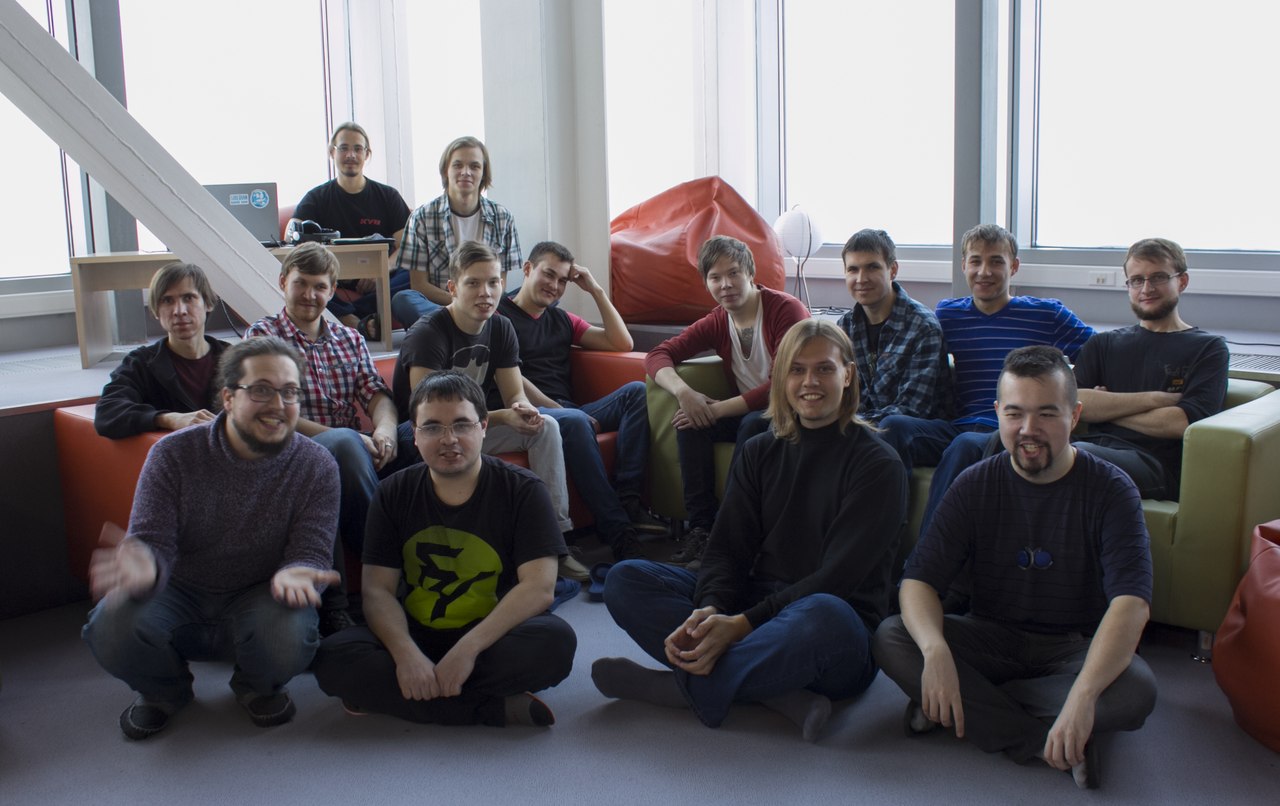
2. Discuss participation details.
Get together a week before the jam and solve all the important issues. It will be very unpleasant if at the last moment your only programmer finds more important things or it turns out that your artist’s grandmother has a sudden birthday and he needs to go to a place where there aren’t even cellular towers. In addition, exchange reliable contacts. If in the middle of the jam, one of you is suddenly taken away by Skype, and nobody knows the phone, then you will lose valuable time.
3. Work locally
If there is such an opportunity, it is better to gather in one place for the whole time of jam. It is more efficient than Skype / Slack and online services. But in this case, you will need to decide in advance and domestic issues. Does everyone have all the necessary equipment? Do you have enough outlets on it? What will you eat and where to sleep in the end? Solve this in preparation.
4. Decide on the technology.
Use only what you know well and are sure of. Bad idea to master the new engine for a jam. We knew one team that started using the Unreal Engine (even at the time of its instability) and only an hour before the end of the jam solved the problems with the assembly. Also decide on all the necessary software that you need, and set it up in advance.
Start
5. Wake up
This may be a non-trivial task. In our area, the jam starts at 7 am on Saturday, so you have to call the participants in advance, otherwise someone will wake up.
6. Prepare to observe the topic.
Yes, you can not follow the theme for the current jam. But even if you do not specify a topic as a category for evaluating your game, you will most likely get lower ratings.
7. Brainstorm
The best way to get an interesting idea for a game is to brainstorm. A limited period of time, during which you write out all the ideas that come to mind, in no way criticizing them.

8. Filter the results, but do not get carried away.
When you already have a big pile of raw ideas - it's time to cook them. You can throw them out, collect Frankenstein from them and discuss what can happen. The main thing is to get the concept of the future project. You can not get involved in this process, we once had a case where the idea of the game was formed only at the end of the first day, and in fact it still needed to be implemented. Set yourself a time limit, beyond which you can not discuss the idea and after which you take the current results. Usually 4 hours is more than enough.
The working process
9. Keep track of tasks
You never hold in your head all the tasks that you need to complete, accept this. Write down the tasks and mark their implementation. This can be just like a regular board (but you probably don’t have enough) and a modern task manager. Our choice is Wunderlist. In it, you can create tasks in different lists and share them with other team members. You should not complicate, for such projects you do not need Jira or Redmine.
10. Determine critical points.
Decide in advance when you have the important parts of the game ready. This could be, for example, the following plan (very simplistic): “1 day is a working prototype, 2 day is a finished version to show it, 3 day is the final polished version”. And if at the expected time they are not ready - get ready to cut or change something in order to be on time. So you will know if you have time to complete the project, and learn to evaluate the tasks.
11. Evaluate the tasks
Every task you do should have priority. Then you can easily understand what to do in the first place, as well as filter what you can throw out in case of overlays. We did not fall into this trap more than once and did secondary things first. Do not do this.
12. Use the familiar and simple.
Solve problems as simply as possible, and if you know the solution you used earlier for a similar problem, take it. We had problems with making difficult decisions that only one person from the team understood. Do not do this.
13. Work a lot, but do not forget to sleep
To make an interesting game in 2-3 days, you will need a lot of time. Use it wisely and then you will succeed. But you can not sit 48-72 hours without a break, rest as much as you need, so as not to be a vegetable and think.
14. Do friendly management.
Make it so that no effort is required to interact with the game. A simple example - now many people use laptops with touchscreens, with the help of which it is difficult to precisely control the cursor, or in general mobile devices. If you have the opportunity to make control without a mouse or with a replacement for it - do it. Even a simple switch of items in the menu by the arrows on the keyboard will be useful. And yes, we still suffer this a little.
15. Show your results
Be sure to highlight your progress with the help of posts and streams. It is clear that this takes time, but the more opinions you get about your game in advance, the better. Even those who participate alone, somehow manage to write meaningful posts - and this is cool. And we, for example, have not mastered Twitch in due measure, but we plan to correct it in the future.
16. Use dynamic content for publishing.
A great idea is to use video, GIF-animation and even playable prototypes instead of text and screenshots in their posts, these formats attract more attention.

An example of competent use of GIF (Breaking Fat game)
17. Chat with contestants
Express your opinion in other people's posts, respond to comments in your posts. The more active you are, the better - your game will initially be interesting to more people.
18. Find your style
Do not assume that any game on LD is indie with pixel graphics. Find your style and do not be afraid to experiment, in the end, jams are created for this. It will be worse if you do not have a style at all, or it will repeat what has already been created.
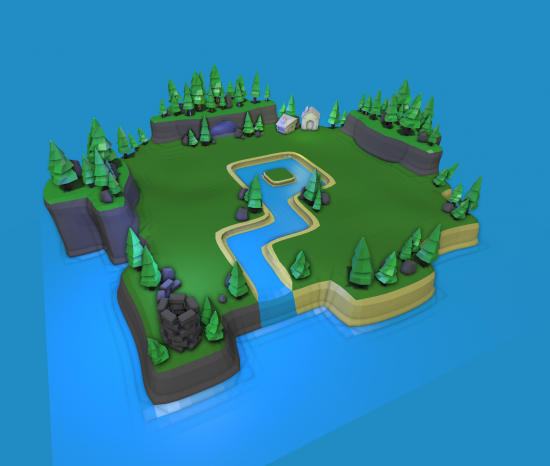

19. Find your character
This is a very creative task for the designer and there are no ready-made solutions. But, if you find a recognizable image for your game - it will be a huge plus - it can be your “brand” when communicating with the audience. Our eggplant with a mustache was found quite by accident, but we realized that it might be interesting by collective intelligence.

20. Add competitive elements
If you can - make players able to measure their results. But do it carefully. At the last jam, we got carried away with this task and spent too much time on the results table. Do not do so, this is a side problem.
21. Possibly add analytics
If you have enough time (a rare situation), add a little analytics to your project, so that not only by the reviews you can understand how people play your game. The benefit now is very simple with services such as Unity Analytics.
Release
22. Make WebGL version
If your engine does not support a web build or you don’t want to bother with it, be prepared for the fact that a large part of the jam audience will pass by your project. Even if you lay out builds for the PC, very few people will be interested in downloading them. Please note that in the case of Unity3D, WebPlayer is an even worse solution; it is already completely out of date. With WebGL, everything is much easier - clicked and waited a bit. You can use Kongregate or Itch.io - the latter has recently had the opportunity to directly insert a build into the LD game page.
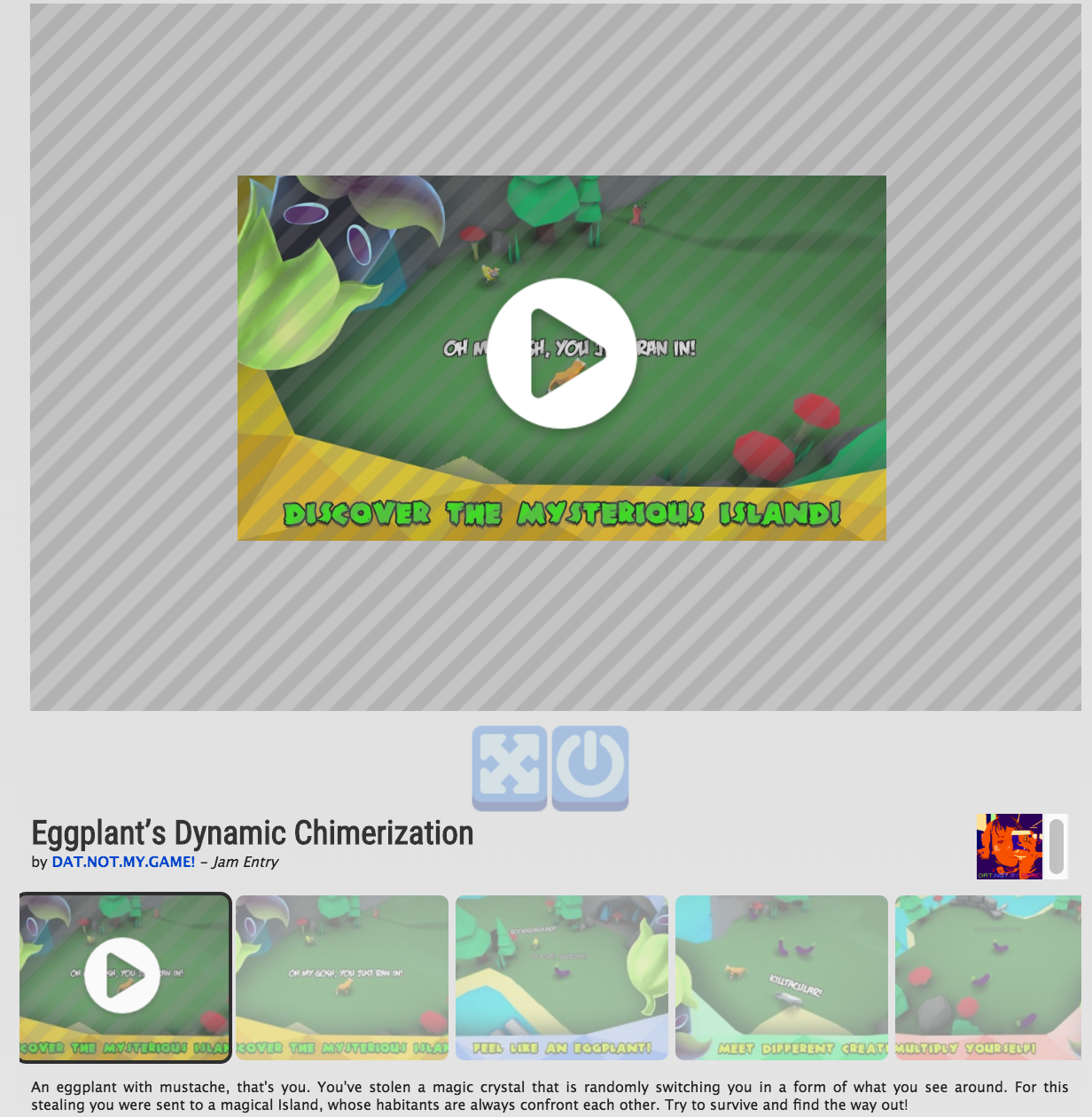
23. Use the correct hosting
Although the Web is the de facto standard, Windows / Mac OS / Linux is also worth the effort. Use for this familiar to all hosting. The best option would be Google Drive, in 2nd place - Dropbox. Do not use any hosting with speed limits and premium features. For display, use only zip-archives, they open on any OS out of the box.
24. The sooner the better
Try to lay out the build earlier than an hour before the end of the competition. Now LD site is much more stable and almost does not fall, but at one of the previous jams we were able to fill in the build with only 15-20 attempts. Be prepared for such situations.
25. Let everyone know
When you have filled in the builds and prepared the page of the game, report it through all available channels. Let everyone know how good you are! And now you can finally sleep.
Completion
26. Publish
If you have access to additional publishing sites, try sending your game there too. It can be both services like indiedb.com, and GooglePlay / AppStore. But do not expect from this some special result, most likely it will not.

27. Evaluate
Send a game to LD is not enough to get the desired result. You need to evaluate other projects, the more the better. It is clear that it is impossible to evaluate about 3 thousand games, but take this thoroughly, try to evaluate at least 100-200. From this, including the number of reviews that you get in the end.
28. Keep your lists of good games.
Now on LD it has become popular to make posts with lists of interesting games. In addition to the appreciation of the community, you can use this to attract interest in your game.
29. Read reviews
You will post comments on the game page, be sure to read them. Especially negative or indicating problems. So you will understand a lot more about your game, a fresh look always finds something that you have missed. And next time, consider your mistakes.
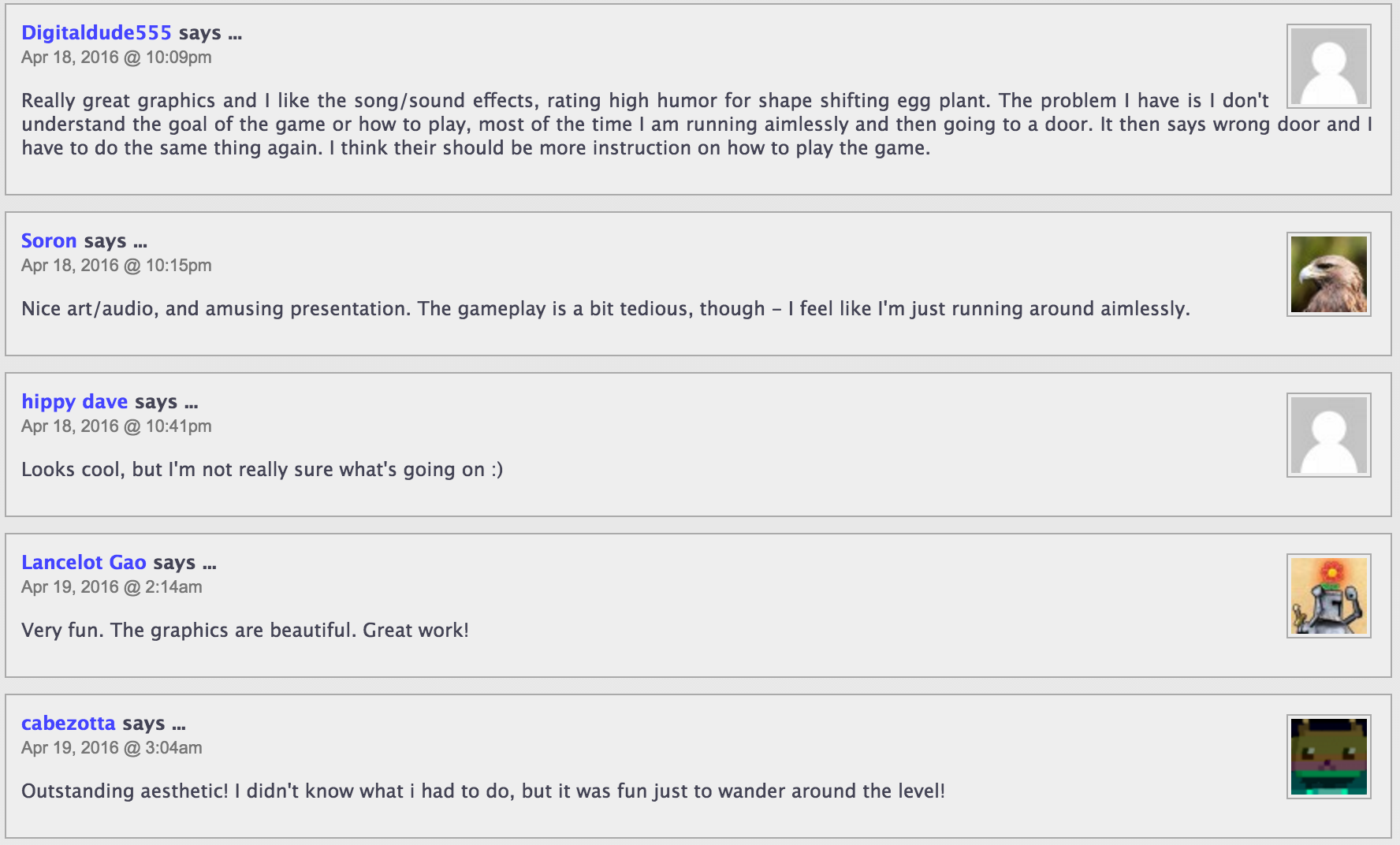
30. Write post-mortem
Another way to find what you could do better is to write a post about what you have been doing throughout the jam. When you analyze your actions, you will inevitably find errors that could have been avoided, and what could have been done better. Write about it, let others not fall into the same trap.
31. View statistics
Do not forget about your project after the competition and look at its results. For example, on the current jam, we received 121 votes on the site and many useful comments, 44 views on Itch.io and 5 funny downloads on GooglePlay.

32. Draw conclusions from analytics.
If you have time to embed any analytical systems - check your expectations. The results will surely differ from what you expected. Judging by the data of our results record system, a total of 877 times 175 unique users have played our game, 77 of whom have passed 1 or more doors. We expected the game to be somewhat simpler.
According to data from Unity Analytics, even more conclusions can be drawn that also do not meet our initial expectations.
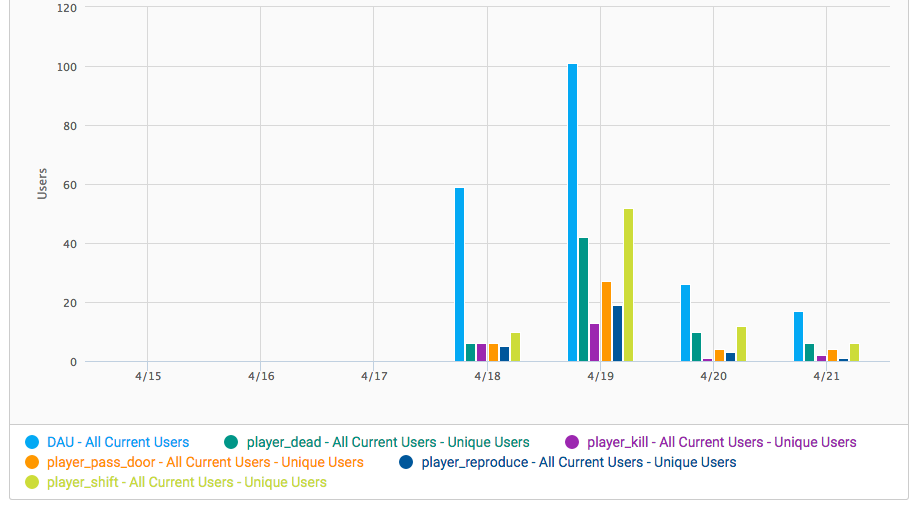
33. Evaluate your progress.
If you have participated in LD before, then you can evaluate whether you have become better compared to previous experience, relatively objectively.
Take for example our previous and last games:
Fireapocalypseeverseen !!! and Eggplant's Dynamic Chimerization (we will not provide links, do not consider it an advertisement).
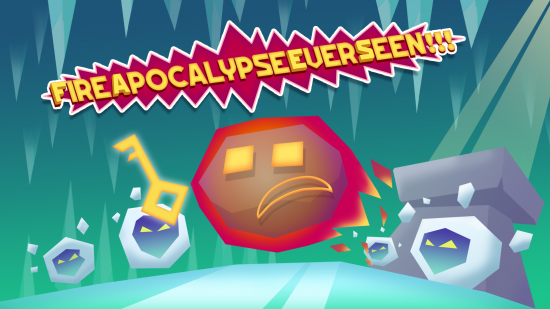
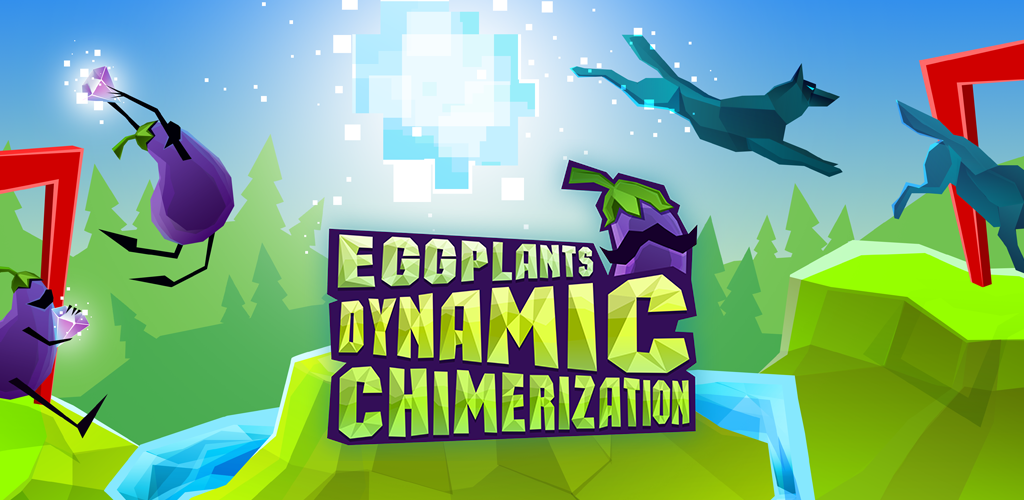
In general, this time we did worse. 16% lower in the average place among the categories (and 2 times worse in overall) and completely dropped in Fun and Innovation.
But we are pleased that this time we entered the top 100 in three categories instead of one and raised our ratings on them (Graphics, Audio and Humor).
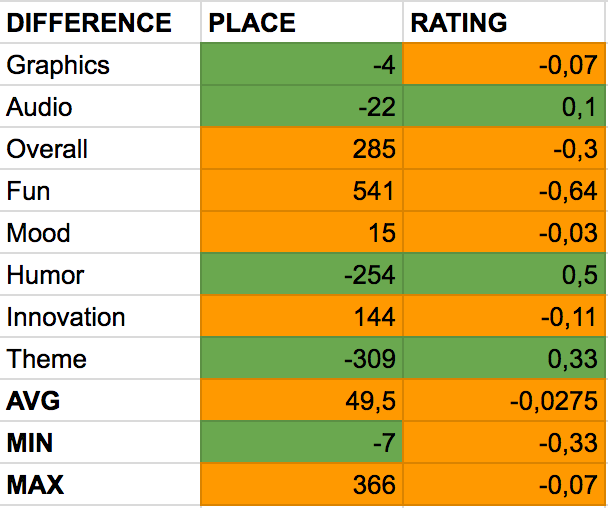
34. Draw conclusions
When you get the results of your game, do not be in a hurry to get upset because of low ratings, if they are. It is better to understand why this happened, and what to do to correct your mistakes in the future. What do we understand? What you need to continue to work on your strengths (graphics, sound and humor), and the next time even more time to devote to the gameplay and the very initial prototyping.
35. Rest is finally
The contest is over, the results are summed up, you have received a bunch of reviews, experience and maybe even some honorable place. Now you can relax. Until the next jam, is it?

Source: https://habr.com/ru/post/283526/
All Articles